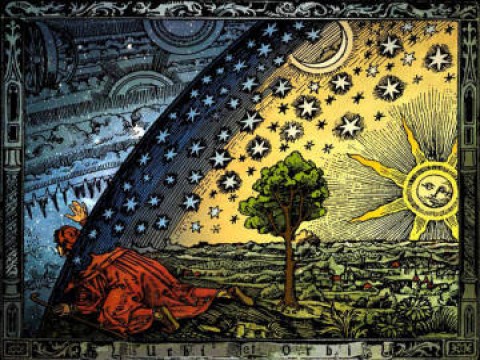I was once called by a reporter after Pluto had been demoted to dwarf-planet status and asked how it would affect astrology. I said, “It won’t. Nothing has changed energetically. Astrology will work anyway.”
People, it seems, are still worried about not being the right sign after the (very old) news flared up last year that the constellations are out of alignment with the zodiac signs. My answer is the same: “Nothing has changed. Astrology will work anyway.”
Those who disparage astrology—the vast, profound science of how the heavenly bodies affect all living things—have been having a field day with the news (known for many centuries to both astronomers and astrologers) that the spring equinox has drifted away from zero degrees Aries and now resides in early Pisces.
This shifts the physical position of the zodiac signs backward in relation to the Earth, so if you were born a Libra you could now call yourself a Virgo. But don’t. Not until I explain. Because this is actually an argument between two different systems of measurement. The signs have always been measured from the spring equinox, when day and night are equal in length. But the Earth does not spin in an upright manner. Instead, it wobbles on its axis. This creates a slight variance, so the “tropical zodiac”—Aries, Taurus, etc.—does shift its position, moving backwards a tiny bit each year. This effect is called “the precession of the equinoxes.”
So, yes, the signs have changed their position in space. Two thousand years ago, when astrology was systematized, the equinox and signs coincided. They have since separated by about 24 degrees—24 days difference. Eastern astrology—Hindu, Tibetan, Chinese, etc.—continues to use these coordinates. These systems are called sidereal, or sky-based, astrology.
But Western astrology instead uses as its starting point Earth’s relationship to the Sun, which stays steady to within 24 hours each year. Aries still begins around March 21st, no matter where in the heavens the zero point of Aries falls.
So don’t worry; your sign is still your sign. You are not suddenly going to develop qualities of the other signs—unless you work at it. And you didn’t lose anything, either.
About that 13th sign: It didn’t just pop out of nowhere.
Ophiuchus (Oh-FIE-u-cuss), “the Serpent Bearer,” hovers near Scorpio but lost out in the celestial lottery back in ancient times when it was decided that Scorpio was closer to Earth’s actual path through the heavens, and thus worthier of inclusion in astrological systems. The Earth tools through space like a planetary Buick, and the 12 zodiac signs are those that coincide with Earth’s path.
There could even be more: Cetus, “The Whale,” and the constellation Auriga are also nearby. But the ancients stopped at 12.
It requires about 25,800 years for Earth to complete a full swing of its axis. So it takes slightly over 2,000 years to move backwards through one zodiac sign. You’ve heard, perhaps, of the dawning of the Age of Aquarius? Well, it’s true. It’s an astronomical fact that Earth is now at the pivot point between the 2,000-year-old Age of Pisces and the upcoming Age of Aquarius. The ’60s hippies were right!
If you don’t feel like wearing bell-bottoms today, it’s all right. It’s enough to recognize this essential truth: we are entering into a new age and a new vibration. Astrological tradition is that the Age of Aquarius will be much more egalitarian, freedom-loving, spiritual and peaceful. Events today show the conflict between the incoming energies and the crystallized attitudes and institutions which resist them.
We can’t hurry the Dawn…but we can’t prevent it, either.








0 Comments
You can be the first one to leave a comment.